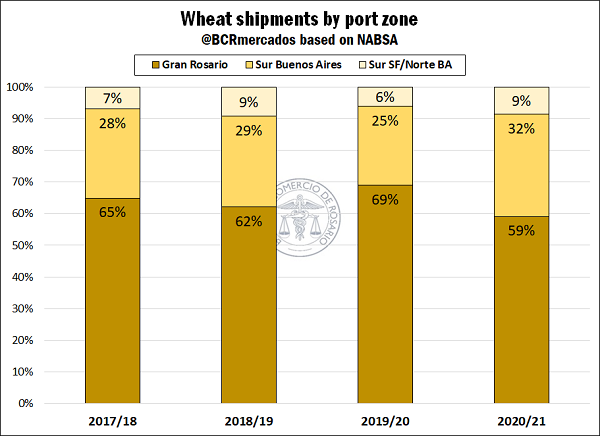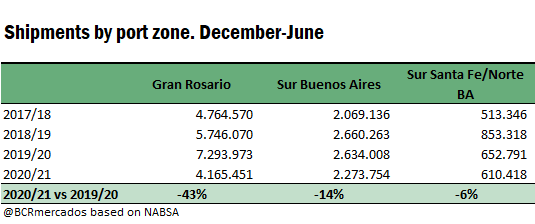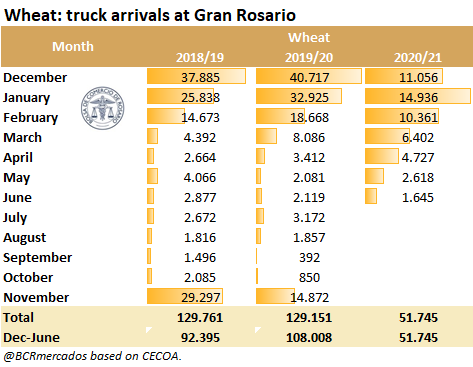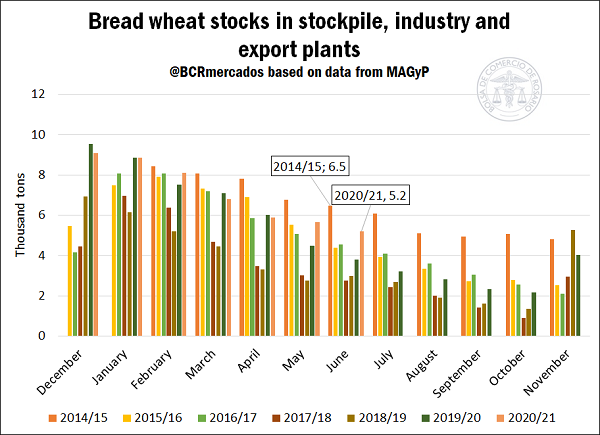Rosario hub loses 10 percent share in wheat shippings
During the current crop season, wheat shippings from Rosario cluster have remarkably lost its share compared to shippings from ports in the South of Santa Fe, and the South Centre of Buenos Aires province. During crop season 2020/21 so far, shippings from Rosario cluster represented only 59% of the total volume of wheat Argentina has exported to date. This is 10 percentage points below the share held during crop season 2019/20, when it reached 69% of the shippings.
All shippings from the main port hubs suffered a drop in terms of volume season-on-season, with the exported tonnage of wheat reaching five-year minimum in crop season 2020/21 to date. However, Rosario city cluster was the most affected, shipping 43% less of the volume exported during the same period in crop season 2019/2020.
This is mainly connected to the lean crop season in the centre and North of the core region, in contrast to the excellent crop production in the South of Buenos Aires province. This province accounted for 59% of the national total wheat production during crop season 2020/21, while the previous year it had only reached 39%. Córdoba, whose export product converges mainly in the ports on the banks of the Paraná river, went from representing 21% of the national product to 9%. Something similar happened in Santa Fe, whose share fell 6 percentage points, reaching 15%.
We can analyse the same phenomenon over the entry of goods in Rosario cluster. If we add up daily data provided by the delivery companies concerning terminal arrivals in this area until 7 a.m., during the current crop season to date, 53,156 trucks of wheat entered the area to be unloaded, about half of the entries accounted for during crop season 2019/20.
Another indicator of remarkable interest is the level of stock in the hands of the wheat business chain. In this sense, June closed with the highest stocks in the stockpiling, industry and export plants for this month since 2015. According to data by the Argentinian Ministry of Agriculture, Livestock and Fisheries (MAGyP, for its Spanish acronym), they reached 5.2 Mt at the end of June, while 6 years earlier, the record obtained was 6.5 Mt. At the same time, the last register suggests a remarkable reconstitution of the national grain reserves after the minimum values reached during crop season 2017/18, finishing the third consecutive crop with stock increases in the month of June.



